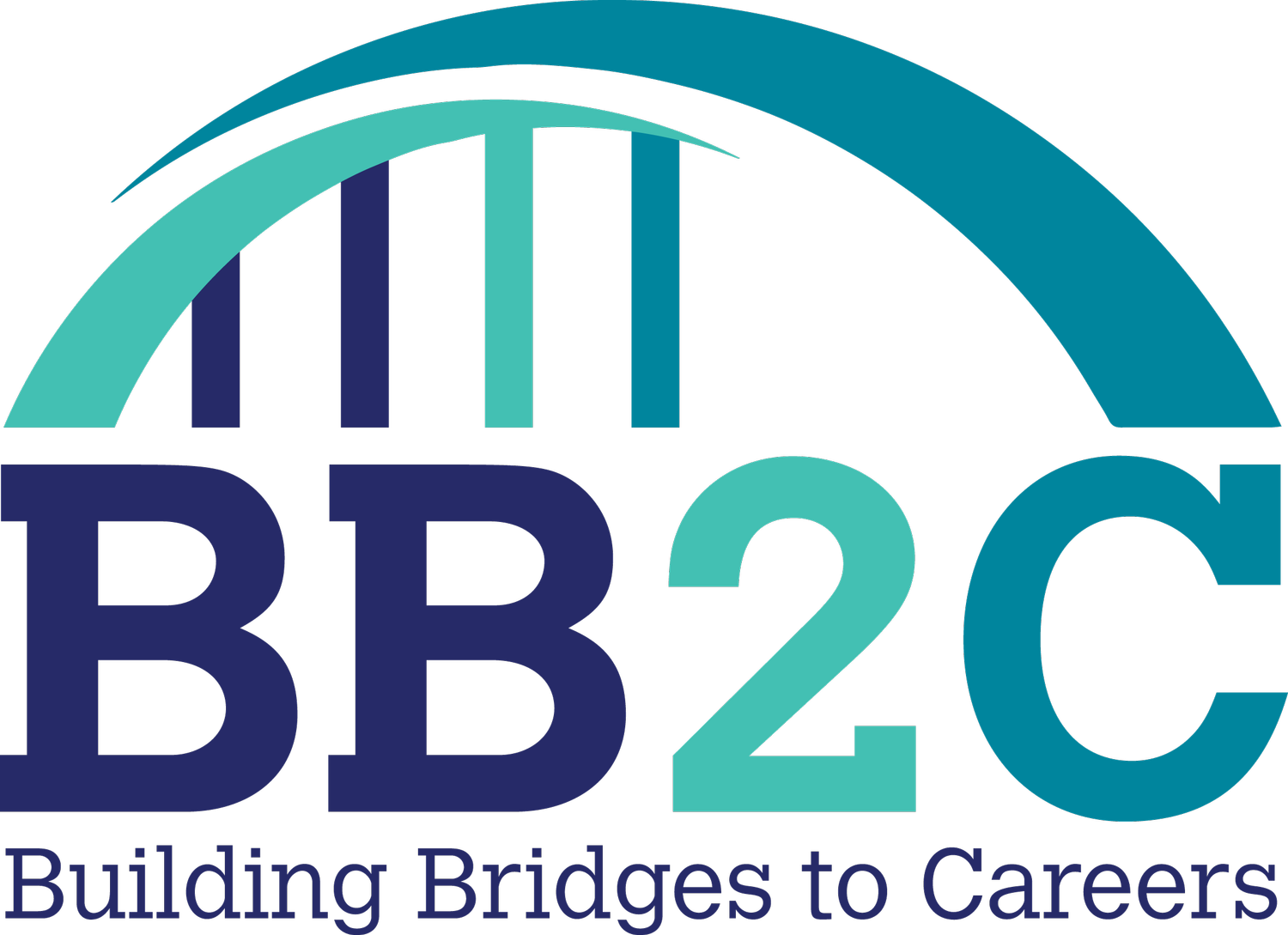BB2C...the last blog of 2017
As we come to the end of 2017, it is time to reflect. I have recently been a part of discussions and meetings, and read some articles that have caused me to dwell on some things. These things seem connected and they make me wonder how BB2C should respond to them, considering our goal of bridging the gap between education and employment.
Below is a listing of facts, articles, and pieces of information that seem related and impactful. All I ask is that you consider them and then let us know your thoughts.
- There are two drivers of change that are affecting the employment landscape: the rise of smart machines and the decline of full-time employment. This is according to a publication released this year by Knowledge Works, The Future of Learning: Redefining Readiness. They suggest that the skills that students will need to possess leading up to the year 2040 will be more social in nature, as opposed to specific to an industry. They also reference “task” based employment, which is where one person simply completes individual tasks for others in order to earn their living (example: Task Rabbit), and a “career mosaic” in place of full-time employment. This publication was at the center of a conversation with a group of regional folks who attended a meeting that was clearly meant to get us thinking about solutions to this problem.
- My husband became a truck driver after the local aluminum plant shut down in 2009. He is an owner/operator that obtains loads (tasks) from the load board (online application that connects drivers to brokers and companies that need something hauled). He has a printer in his truck that prints directly from his smart phone so that he can complete paperwork, and then scan it back to the company to secure the load. Starting today (12.18.17) he is required to have electronic logs that track his whereabouts and the number of hours that he has driven. This is accomplished through a device that has access to the computer system of the truck, which then connects to a smart device through an app.
- Uber's truck, Otto, has delivered autonomous loads. Uber's Self-Driving Truck
- McKinsey&Company released this article, titled “Where is technology taking the economy?” Very interesting read, considering the first three points. The gist…”We are creating an intelligence that is external to humans and housed in the virtual economy.” This information is a bit mind blowing and scary, while at the same time an eye opener to what may be coming in the future.
- Considering the McKinsey&Company article...can rural areas keep up, or are we going to get left behind? The state of Ohio is actually doing well in terms of private sector employment growth, with a 10.5% increase between 2011-2016, according to the JobsOhio 2016 annual report. In the same JobsOhio annual report, southeast Ohio (25 counties) only reported 412 new jobs and 2,188 retained jobs, while the other five regions reported the following respectively: Central - 4,032 and 28,431; Northeast - 4,853 and 11,670; Northwest - 2,597 and 15,112; West - 3,687 and 11,240; and Southwest - 5,022 and 8,132. JobsOhio 2016 Annual Report
- For the last 10 years, seniors in Washington County, Ohio have been completing a senior survey about their post-secondary career plans. Every single year, students say that personal experience was the number 1 reason that they chose their career path. Number 2 and 3, are always mom and dad. Senior Survey Results
- Teachers and business representatives that have completed the Problem Scenario Project this year were surprised at the students’ desire to have face-to-face interactions as part of their solutions. Problem Scenario Blog
- Employers from all over consistently say that they have trouble finding employees with the soft or professional skills that they need them to have. Technical skills are no longer enough. I don’t have a link for this, but ask any employer around.
- BB2C, as a local collaborative organization, has been recognized as a way to address this ever growing issue/problem. The Governor’s Office of Workforce Transformation interviewed 8 similar organizations and created a publication so that other areas/regions can also create collaborative efforts to address the changing landscape of employment. Regional Workforce Collaborations: Guidelines for Action
Share your thoughts with us (so we can, quite ironically, collect data that we can use for making decisions) by completing the form on the link, or emailing one of us: BB2C Contact Us. Also, check out our weekly MailChimp to read about our business of the month, MicroMachine Works, which has no website or social media presence.
